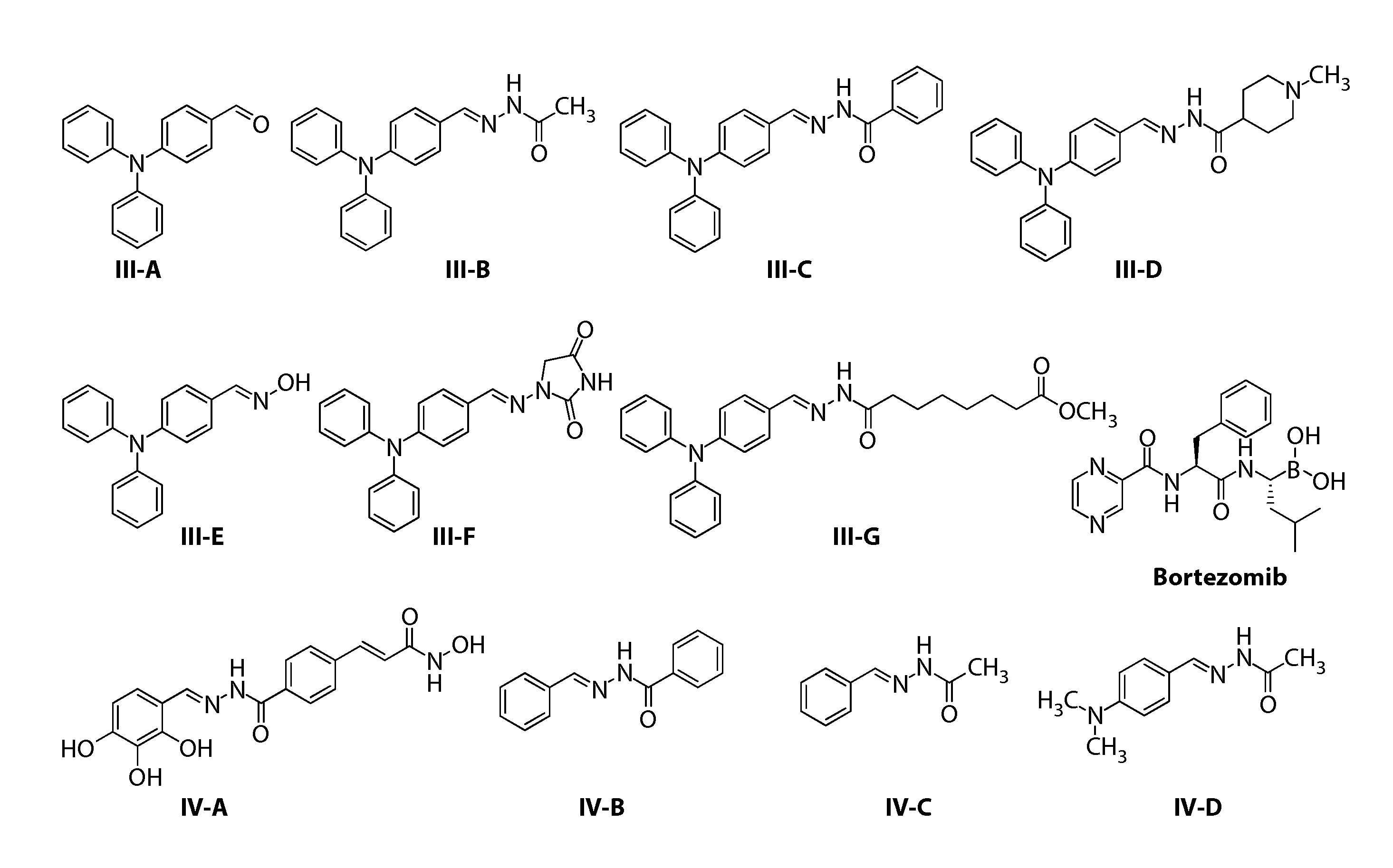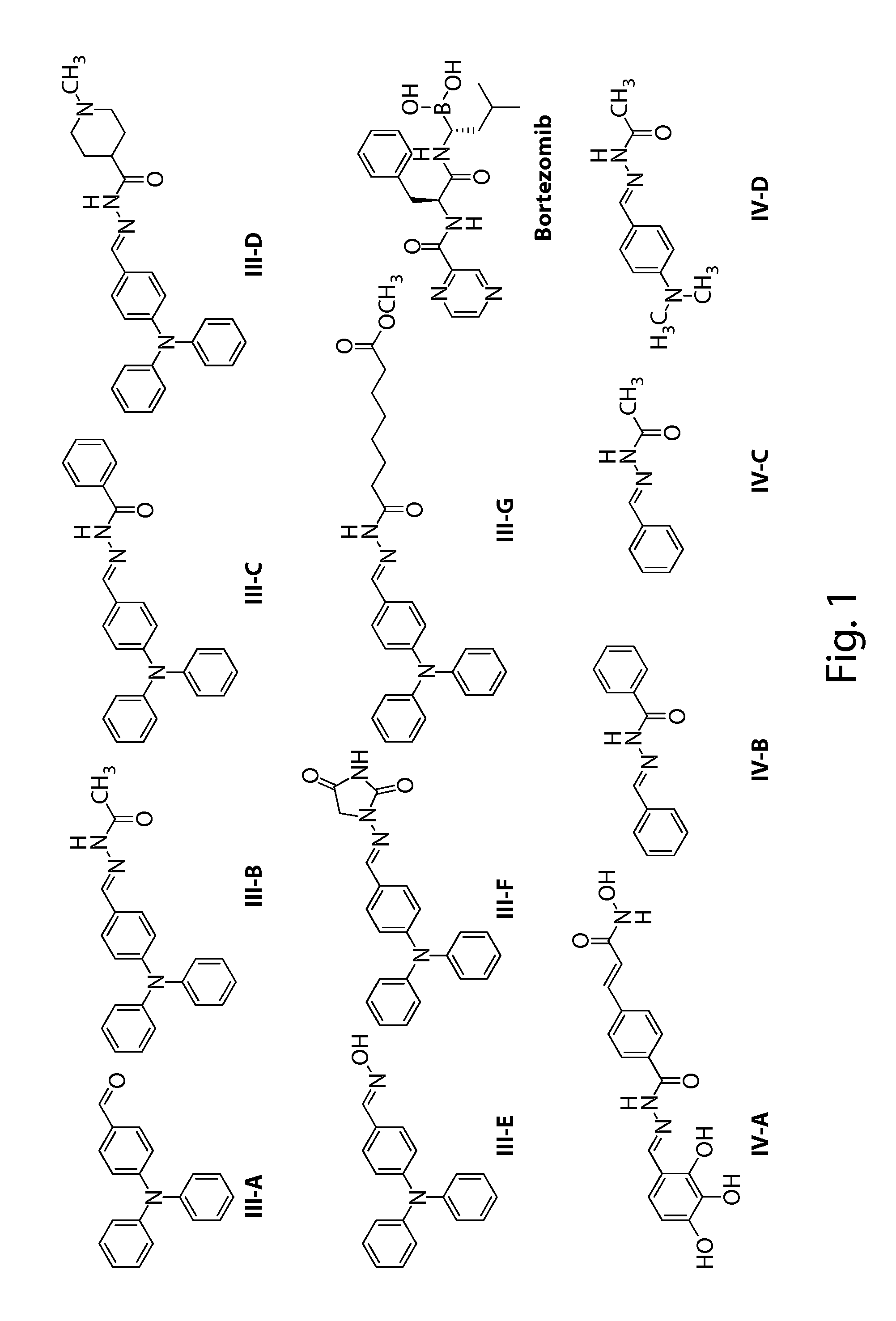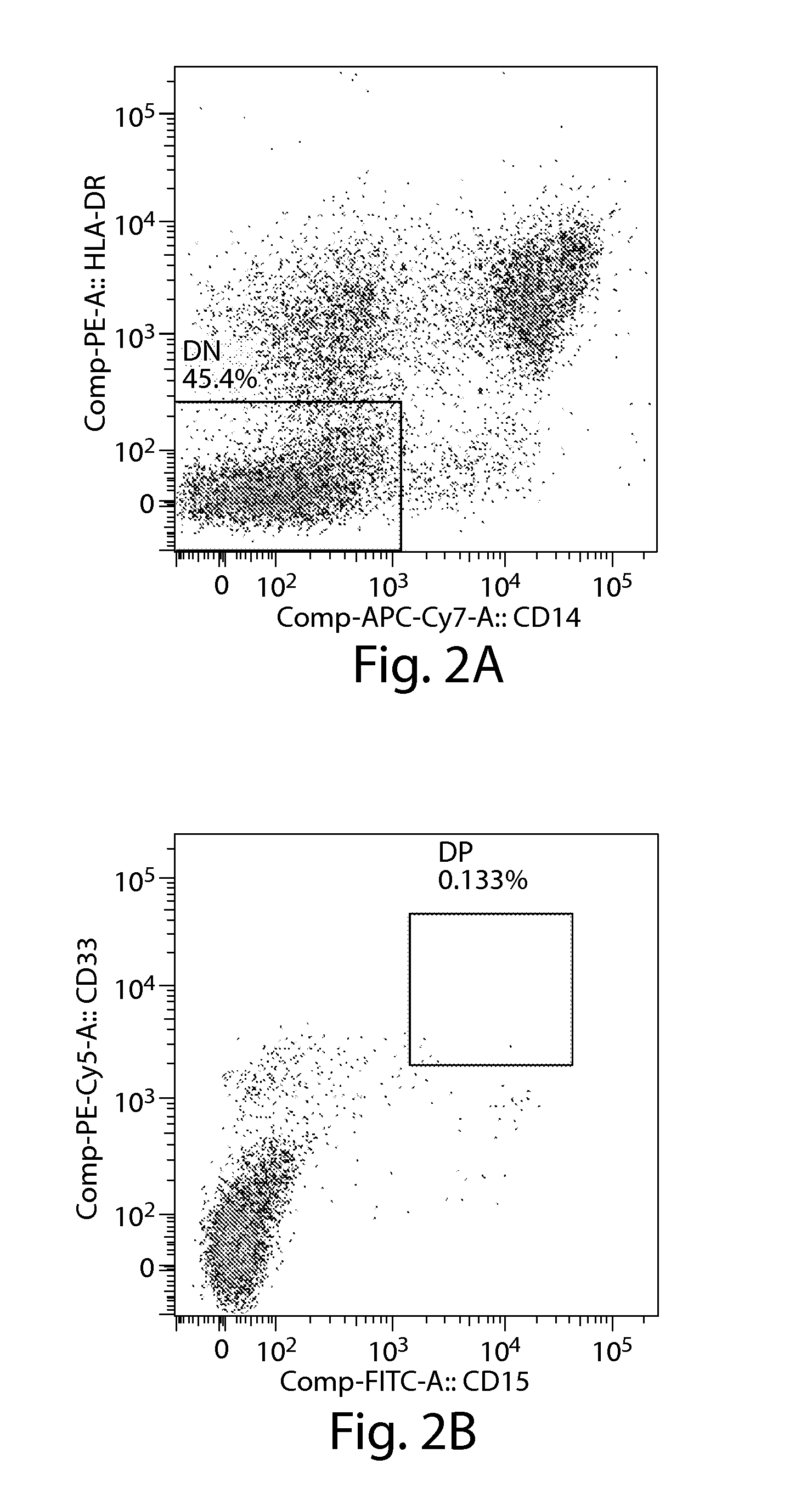Anti-proliferative compounds and uses thereof
- Summary
- Abstract
- Description
- Claims
- Application Information
AI Technical Summary
Benefits of technology
Problems solved by technology
Method used
Image
Examples
example 1
Synthesis of the Compounds
[0312]The compounds provided herein (see FIG. 1 for the chemical structures) can be prepared from readily available starting materials using the following general methods and procedures. Various intermediates useful for preparation of the compounds of the invention can be prepared in accordance with methods described in the art (Upasani et al., J. Med. Chem. (1997) 40:73-84; Hogenkamp et al., J. Med. Chem. (1997) 40:61-72) and using the appropriate reagents, starting materials, and purification methods known to those skilled in the art. The compounds of the invention can be prepared using these intermediates. For example, a general method for synthesizing the inventive compounds is demonstrated in Scheme 1 below:
[0313]Compound III-B.
[0314]273 mg of 4-(diphenylamino)benzaldehyde (Sigma-Aldrich, St. Louis, Mo.) and 74 mg of acetohydrazide were dissolved in 5 mL of methanol followed by addition of one drop trifluoroacetic acid. The reaction mixture was heated ...
example 2
MDSCs were Increased in Multiple Myeloma Bone Marrow and Peripheral Blood
[0347]In order to determine whether myeloid derived suppressor cells (MDSCs) are present in subjects with multiple myeloma (MM), fresh or cultured peripheral blood mononuclear cells (PBMCs) and bone marrow mononuclear cells (BMMCs) from human subjects with MM have been analyzed using standard cell-surface multicolor flow cytometry staining methods (see, e.g., Herzenberg et al., Clin. Chem. (2002) 48:1819-27; and Perez et al., Nat. Biotechnol. (2002) 20:155-62). The number of CD11b+CD14+HLA-DR− / lowCD33+CD15+ MDSCs was significantly increased in both the peripheral blood (FIGS. 2C-2D) and bone marrow (FIGS. 2E-2F), compared to the number in peripheral blood from healthy subjects (FIGS. 2A-2B).
example 3
Compound III-D Eradicated MDSCs in Multiple Myeloma Bone Marrow and Peripheral Blood Tumor Microenvironment and Regulated MDSC Maturation into CD4+ and / or CD14+HLA-DR+ Antigen Presenting Cells
[0348]Compound III-D induced significant decrease in the number of CD11b+CD14− HLA-DR− / lowCD33+CD15+ MDSCs in MM-PBMC (FIG. 3D), compared to the number of the MDSCs in untreated MM-PBMC (FIG. 3H). MM-PBMCs were cultured overnight with (1 μM) or without compound III-D. MDSCs (CD11b+CD14−HLA-DR− / lowCD33+CD15+) were determined by flow cytometry analysis. Gates 110 and 130 indicate the MDSC population. Compound III-D induces maturation of MDSCs (CD11b+CD14−HLA-DR− / lowCD33+CD15+) into CD14+ and / or CD14−HLA-DR− / low (FIG. 3G) in MM peripheral blood compared to untreated MM-PBMC (FIG. 3C). MM-PBMCs were cultured overnight with (1 μM) or without compound III-D. CD14 and / or HLA-DR expressing MDSCs (CD11b+CD14−HLA-DR− / lowCD33+CD15+) were determined by flow cytometry analysis. Gates 100 and 120 indicate CD...
PUM
 Login to View More
Login to View More Abstract
Description
Claims
Application Information
 Login to View More
Login to View More - R&D
- Intellectual Property
- Life Sciences
- Materials
- Tech Scout
- Unparalleled Data Quality
- Higher Quality Content
- 60% Fewer Hallucinations
Browse by: Latest US Patents, China's latest patents, Technical Efficacy Thesaurus, Application Domain, Technology Topic, Popular Technical Reports.
© 2025 PatSnap. All rights reserved.Legal|Privacy policy|Modern Slavery Act Transparency Statement|Sitemap|About US| Contact US: help@patsnap.com



